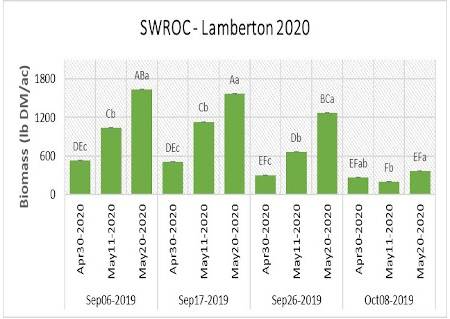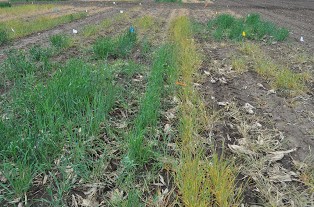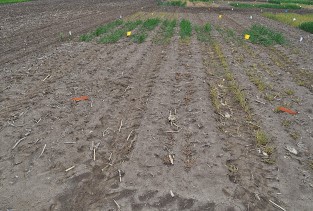By Liz Stahl and Axel Garcia y Garcia
As corn and soybean reach maturity and the crop canopy starts to open, a prime window also opens for seeding a cover crop. A cover crop can be interseeded in the fall into standing corn and soybean via the air or with ground equipment such as a high-clearance seeder. Cover crops can also be seeded after corn or soybean harvest, which allows use of a drill for more accurate seed placement and seed-to-soil contact. Waiting to seed a cover crop until corn or soybean are harvested for grain, however, may leave little if any time for the cover crop to establish and grow in the fall. Regardless, adequate moisture and seed-to-soil contact will aid in successful establishment.
How important is seeding timing in the fall?
Cereal rye is the most common cover crop in MN for a number of reasons. It is relatively inexpensive, easy to establish, and seed is typically widely available. A cereal rye cover crop can provide soil health and water quality benefits by reducing erosion potential, increasing soil organic matter, improving soil structure, and by scavenging nitrogen that might otherwise leach through the soil profile. It can also tolerate many of the herbicides used in a traditional corn/soybean system, even though it can be easily terminated with timely application of an appropriate herbicide. When allowed to overwinter and produce adequate biomass in the spring, cereal rye may also help suppress early-emerging weeds.
Although cereal rye can be seeded from late July into November in MN, research conducted at the U of MN Southwest Research and Outreach Center in Lamberton shows that seeding date can influence spring biomass production. Biomass production is an important indicator of the potential for the cover crop to provide soil health and water quality benefits, as well as weed suppression.
In a trial established late-summer to early-fall of 2019, cereal rye was seeded at 60#/acre with a Penn State Interseeder at four seeding dates (September 6, 17, and 26, and October 8). In the spring, each seeding date plot was terminated at three different dates (May 4, May 12, and May 21) with Cornerstone Plus @ 1 qt/ac. Cover crop biomass production was measured prior to termination and statistical analysis was conducted on the results.
Preliminary results show that within a seeding date, cereal rye biomass increased as termination was delayed (Figure 1). Biomass production was generally similar across the September seeding dates at each termination timing, although the September 26 date produced significantly less biomass than the earlier seeding dates at the first termination timing. In comparison, cereal rye seeded October 8 never took off in the spring, and biomass production was similar across termination dates. When seeded in October regardless of termination timing, biomass production was similar to or less than what was produced by cereal rye seeded in September and terminated in early May.
These preliminary results show that spring growth of cereal rye was optimized when the cover crop was seeded by mid-September. Care must be taken in interpreting this data as this was the first year of a trial conducted at one location. The initial results, however, highlight the importance of seeding cereal rye as soon as possible in the fall to glean the most benefits of the cover crop in the spring. This trial is being repeated for the 2020/2021 season.

Figure 1. Effect of seeding and termination dates on cereal rye biomass yield, spring 2020 (preliminary results). The amount of cover crop biomass produced in the spring by cereal rye was significantly affected by seeding date, termination date, and their interactions. Bars (biomass yield) with the same upper case letter are not significantly different across seeding and termination dates (alpha = 0.05). Within a seeding date, bars with the same lowercase letter are not significantly different (alpha = 0.05)

Photo 1: One block of the first seeding date (9/9/19) treatments on May 21, 2020. Subplots were terminated 5/4 (brown), 5/12 (yellowing), and 5/21 (still green). Bare sections in plots indicate where cover crop biomass samples were collected prior to termination.

Photo 2: One block of the last seeding date (Oct. 8, 2019) treatments on May 21, 2020. Subplots were terminated 5/4 (brown), 5/12 (yellowing), and 5/21 (still green). Bare sections in plots indicate where cover crop biomass samples were collected prior to termination. Note the minimal amount of biomass produced by all termination dates compared to the first seeding date (Photo 1).
Source : umn.edu